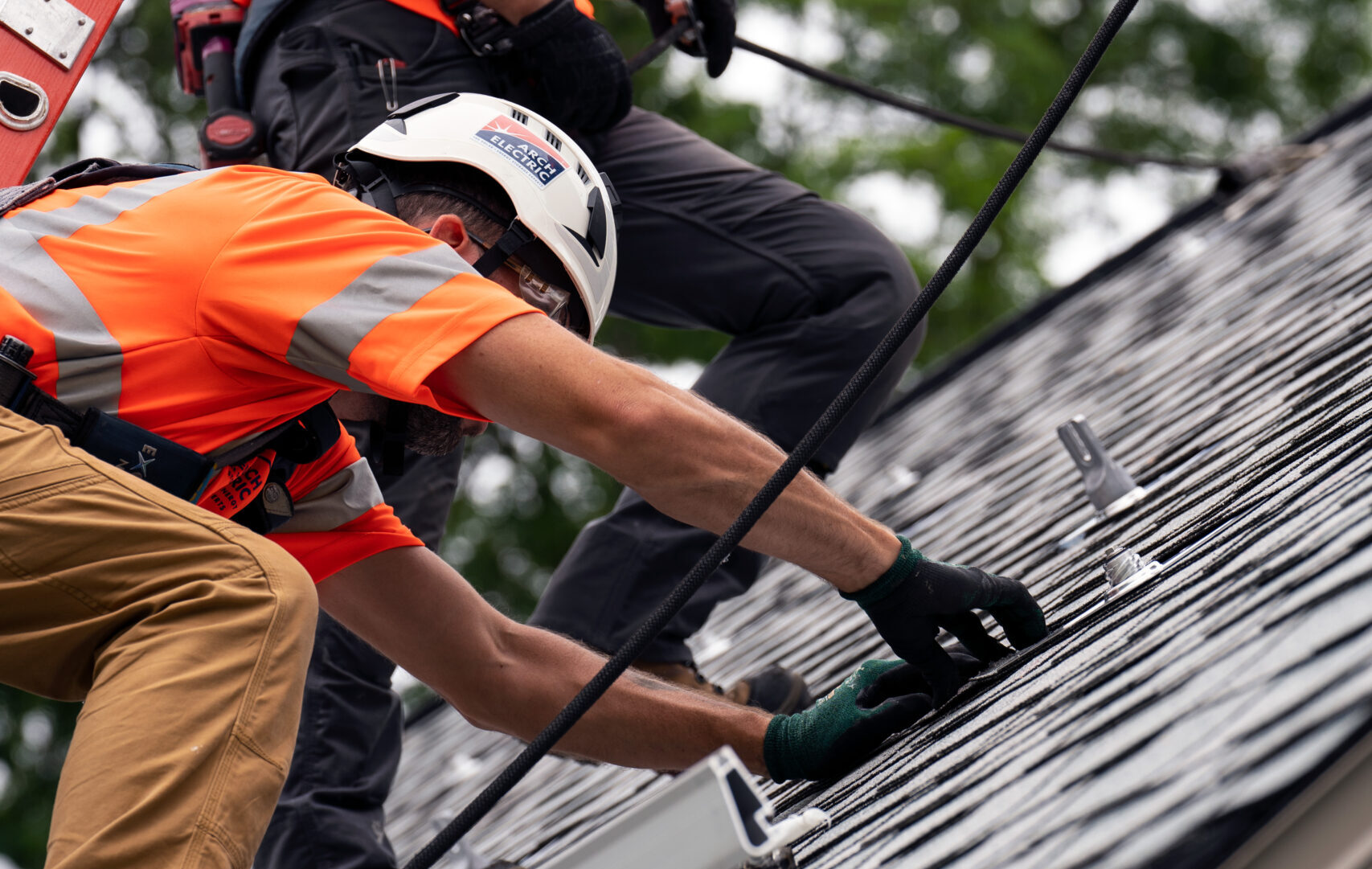
by Sam Dunaiski | Apr 27, 2021 | Local Initiatives, Renewables, Solar, Utilities
On Tuesday, April 27, 2021, the City of Madison and Dane County announced the start of this year’s MadiSUN Solar Energy Programs. The MadiSUN programs aim to expand access to local renewable energy and include initiatives and grants that assist residents, businesses, and nonprofit organizations with onsite solar electric installations.
The MadiSUN Solar Group Buy is for Dane County homeowners looking to install solar on their rooftops. The Solar for Business program provides project grants and consulting services for Madison businesses interested in installing solar electric systems. And the Backyard Solar program offers up to $10,000 in grants for affordable housing providers and nonprofit organizations seeking to install solar electric systems at their facilities in the City of Madison.
The Group Buy program, now in its sixth year, will expand this year to offer solar installations to homeowners across Dane County. The Group Buy has spurred approximately $2.38 million in clean energy investments since 2016 and has added over 800 kilowatts of renewable electricity to the community’s electric grid. To date, nearly 200 local homes have gone solar through MadiSUN.
“Now in its sixth year, the MadiSUN program offers a way for residents, businesses, nonprofits, and affordable housing providers to go solar,” said Stacie Reece, the Sustainability Program Coordinator for the City of Madison. “Every rooftop solar installation contributes to the City of Madison’s goal of 100% renewable energy and helps reduce carbon emissions.”
In addition to expanding the Group Buy to all of Dane County, the program will also expand the number of solar contractors. MadiSUN has partnered with Full Spectrum Solar, Midwest Solar Power, and Arch Electric to ensure residents have access to reputable, experienced contractors for their solar installations.
“With the program’s expansion this year, we wanted to ensure that homeowners throughout the county had multiple options when it came to solar,” stated Sam Dunaiski, Program Director for MadiSUN. “Residents in rural portions of Dane County have different needs than residents in urban or suburban areas. Homeowners will now have access to more solar contractors and the different materials and services they provide.”
The Group Buy will also provide multiple options for homeowners looking to finance their solar systems. Low-interest loans for solar arrays will be available through greenpenny bank and Clean Energy Credit Union.
“We can offer Dane County residents fast, easy, and affordable financing for their solar projects,” said Jason MacDuff, Vice President of greenpenny. “Whether the appeal of solar is its climate stewardship, its economic benefits, or both, greenpenny’s mission is to finance a sustainable tomorrow.”
The Solar for Business program, currently in its fourth year, will offer grants to Madison-based businesses choosing to install onsite solar arrays. The program has facilitated solar on 16 businesses across the city for a total capacity of more than 750 kilowatts of renewable energy.
The Backyard Solar program will continue to offer grants for solar projects with affordable housing providers and nonprofit organizations in Madison. The program approved seven grants during its first two years of operation. These seven projects will result in nearly 550 kilowatts of solar energy, enough to power roughly 100 households.
Movin’ Out, an affordable housing provider based in Madison, won a Backyard grant in 2020 to install a 100-kilowatt solar array at the Ace Apartments. The facility will provide affordable housing access to children, veterans, the disabled, and their families.
“The opportunity to participate in MadiSUN’s Backyard Solar program helps us achieve our goals for green building to provide the healthiest possible environments for the people and communities we serve,” said Kathryne Auerback, Executive Director of Movin’ Out. “The more we are able to invest in renewable energy and environmentally sustainable building now, the greater the returns will be in the long run.”
Residents can receive a complimentary solar assessment by visiting madisunsolar.com and filling out the “I’m Interested” form. Applications for the Group Buy program must be submitted by August 31, 2021. The application deadline for the Backyard Solar Grant is September 1, 2021, and applications for the Solar for Business grant are open until December 31, 2021.
About MadiSUN
MadiSUN facilitates solar power installation for residents, businesses, and nonprofits located within the City of Madison. Promotional videos can be accessed by visiting MadiSUN’s YouTube channel. More can be found at www.madisunsolar.com.
About RENEW Wisconsin
RENEW Wisconsin is a nonprofit organization that promotes solar power, wind power, biogas, local hydropower, geothermal energy, and electric vehicles in Wisconsin. RENEW Wisconsin is contracted by the City of Madison to administer the MadiSUN programs. More information can be found at www.renewwisconsin.org.
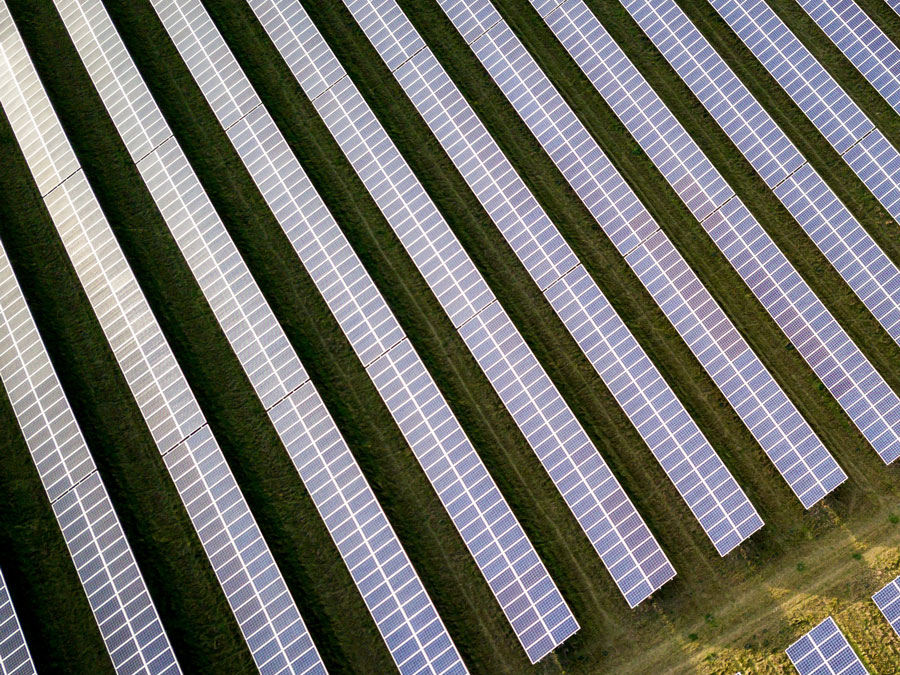
by Michael Vickerman | Apr 22, 2021 | Public Service Commission, Renewables, Solar, Utilities
First round of solar farms to be operational in 2023
The Public Service Commission’s approval today of Alliant Energy’s proposed buildout of new solar power represents the most significant advance yet towards a zero-carbon future in Wisconsin.
With the Commission’s ruling under its belt, Alliant has secured all the necessary permits to set in motion the first wave of a massive solar deployment across Wisconsin. Totaling 675 megawatts (MW), the first six solar farms approved today will take Alliant two-thirds of the way toward its ambitious goal to integrate more than a gigawatt of solar capacity into its base generation portfolio over the next four years. (Note: a gigawatt is 1,000 megawatts).
When this initial wave of projects is fully operational in 2023, roughly 13% of the electricity sold to Alliant customers will come from a solar farm. Indeed, Alliant is on course to own and operate almost one-half of the state’s solar capacity by 2024, a remarkable percentage given that it accounts for only 16% of the state’s electricity sales.
“We salute Alliant for committing to this bold pivot towards zero-carbon power generated in Wisconsin,” said RENEW Wisconsin Executive Director Heather Allen. “We are hopeful the Public Service Commission’s decision will encourage other utilities to go big on solar power.”
Allen said: “Alliant’s substantial investment in clean energy will produce savings that will be passed along to customers over the lifetimes of these projects. But when you factor in the other benefits from solar power–the job creation opportunities, the stream of revenues for host landowners and their communities, and fewer pollutants discharged into our air and groundwater–this build-out is very much in the public interest.”
In March 2021, Alliant submitted an application for authority to build and operate a second wave of solar power, another six farms totaling 414 MW. Approval of that application would increase Alliant’s solar portfolio to 1,089 MW.
“A solar build-out of this magnitude would have been unthinkable five years ago,” Allen said. “Only a handful of utilities then were thinking about replacing their aging coal plants with carbon-free energy sources like solar. But with these two back-to-back solar applications, WPL appears to be off to the races.”
Once operational, the solar farms listed in the tables below would account for more than 20% of Alliant’s electricity sales in Wisconsin. What is more, the output from these 12 solar farms would surpass generation totals now achieved from Wisconsin’s wind power projects.
Alliant Energy solar farms – 6680-CE-182
Approved April 22, 2022 |
| Solar farm |
Location (county) |
Capacity (in MW) |
Year online |
| Crawfish River |
Jefferson |
75 |
2022 |
| Grant County |
Grant |
200 |
2022 |
| North Rock |
Sheboygan |
50 |
2023 |
| Onion River |
Rock |
150 |
2023 |
| Richland County |
Richland |
50 |
2022 |
| Wood County |
Wood |
150 |
2023 |
| Total |
675 |
|
Alliant Energy solar farms – 6680-CE-183
Application filed March 31, 2021 |
| Solar farm |
Location (county) |
Capacity (in MW) |
Year online |
| Albany |
Green |
50 |
2023 |
| Beaver Dam |
Dodge |
50 |
2023 |
| Cassville |
Grant |
50 |
2023 |
| Paddock |
Rock |
65 |
2023 |
| Springfield |
Dodge |
100 |
2022 |
| Wautoma |
Waushara |
99 |
2023 |
| Total |
414 |
|
So why is Alliant working so hard to integrate a gigawatt of solar capacity into its generation mix? The short answer is that the utility has determined that building solar power today is more cost-effective than prolonging the life of its coal units. This realization came after a thorough analysis that compared the adequacy of its existing generating fleet with the operational savings and flexibility Alliant could achieve from a massive solar build-out.
Here’s how Alliant summarized the conclusions of its modeling work to justify its latest application.
“Based on this result, {Alliant} developed its Clean Energy Blueprint resource plan, its preferred plan to benefit customers, which includes: retiring the Edgewater 5 generating unit by the end of 2022; retiring Columbia 1 and Columbia 2 by the end of 2023 and 2024, respectively; serving customers with capacity and energy from 1,089 MW of new utility-scale solar generation installed in Wisconsin by the end of 2023, and installing distributed solar and battery storage resources in the communities {Alliant} serves.
The PSC is expected to rule on its second application in early 2022.
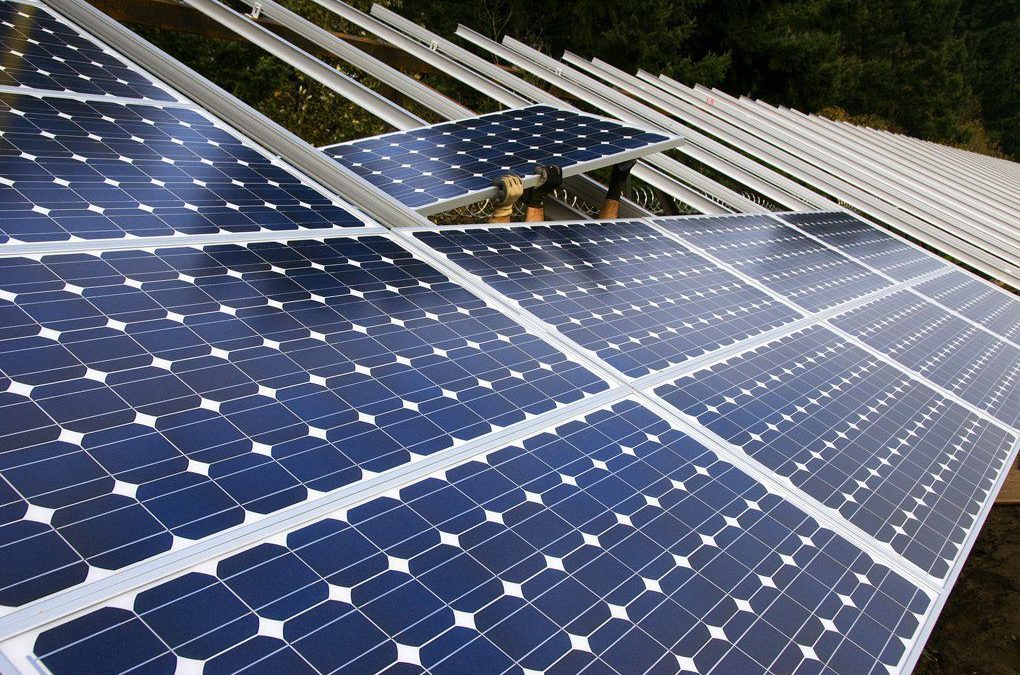
by Michael Vickerman | Mar 16, 2021 | Policy, PSC Priorities, Public Service Commission, RENEW Wisconsin, Renewables, Solar, Utilities
After simmering on the proverbial back burner for nearly two years, the third-party financing issue relating to customer-sited solar power has been thrust back into the public spotlight as pressure builds to resolve the legal questions surrounding it.
The reemergence of this issue can be traced to two parallel developments. The first is a Public Service Commission (PSC) proceeding moving toward a ruling settling the legality of third-party-owned solar systems serving individual retail customers. The second is a lawsuit recently filed by the Midwest Renewable Energy Association in Portage County Circuit Court, challenging the PSC’s authority to regulate the financing of behind-the-meter systems that serve host customers only.
The PSC proceeding began in March 2019 when Eagle Point Solar, a Dubuque-based solar contractor, filed a complaint against We Energies for blocking the installation of rooftop arrays serving the City of Milwaukee. In its complaint, Eagle Point contends that PSC Chapter 119, which regulates the interaction between small-scale electricity producers and the utility grid, does not give We Energies the right to deny interconnection to a customer based on how the generating equipment is financed. According to We Energies, however, a third party owner of the equipment that supplies electricity to one customer under contract should be regulated as a public utility.
Following an extended period of legal maneuvering, the PSC set in motion a process for investigating Eagle Point’s complaint (Docket 9300-DR-104). In so doing, it expanded the scope of the proceeding to consider the public utility question that led to the interconnection denial. When the parties finished entering evidence into the hearing record, the PSC opened a public comment window on the proceeding, which ended on February 23rd.
Supporters of third-party financing sprang into action, led by RENEW. To illustrate the breadth and depth of support for opening up the solar market in this fashion, RENEW circulated an action alert encouraging those who care about this issue to submit comments supporting Eagle Point’s position. Networks such as Wisconsin Climate Table, Wisconsin Health Practitioners for Climate Action, and our own solar contractor e-mail list helped circulate RENEW’s alert beyond our own activist base. At the same time, organizations such as 350 Madison and Environmental Law and Policy Center (ELPC) asked their activists and members to post comments on the PSC website.
As a result of our combined efforts, a total of 336 individuals and organizations weighed with their views on the Eagle Point matter. Of that, 327 comments expressed support for opening the market to allow third-party ownership of solar electric systems in Wisconsin. In that overwhelming display of support, several themes prevailed, including the following:
- Third-party financing is already expressly authorized in 28 states;
- Allowing third-party-owned solar systems is consistent with Wisconsin case law;
- The threat of being regulated as a public utility discourages businesses from providing solar power generated onsite to retail customers through leases and sale agreements;
- Third-party financing would make solar power affordable to low-to-moderate income households and nonprofit entities such as schools;
- Expanding solar financing options would help communities reduce their reliance on harmful fossil energy sources; and
- Expanding solar financing options would invigorate local economies.
These arguments track closely to those articulated by Wisconsin solar contractors and consultants in a March 2019 filing urging the Commission to approve Eagle Point’s petition. Similar to our efforts during the comment period, RENEW shaped the themes in that statement and pulled together a coalition of market actors to demonstrate support for third-party financed solar energy. In the intervening two years, Eagle Point Solar and the City of Milwaukee labored to amass a set of facts and legal arguments to support a finding that WEPCO’s action was unlawful.
The merits of this case are clear-cut, as are the regulatory remedies. Other states that regulate electric utilities have taken steps to affirm the legality of third-party-financed solar, most notably Iowa, which did so in 2014, the result of a long and expensive legal fight waged by Eagle Point. In contrast to Iowa, the State of Wisconsin has allowed this issue to languish for many years without resolution.
But with the filing of briefs from parties on March 10th, the Eagle Point proceeding has finally reached the home stretch. The strong outpouring of public support for third-party financed solar tells us that a policy call from the PSC is long overdue.
In a brief representing RENEW and other solar advocates, we urged the PSC to take the following actions:
- Order WEPCO to interconnect the City of Milwaukee solar projects, regardless of how those projects are financed;
- Clarify that a utility may not deny interconnection based on project ownership, and
- Clarify that third-party owners of customer-sited distributed generation are not “public utilities” under Wisconsin law.
RENEW would like to thank Eagle Point Solar and the City of Milwaukee for leading this crucially important regulatory battle, ELPC for drafting a particularly persuasive legal brief on behalf of clean energy advocates, and the 327 commenters who affirmed their desire for an expanded solar marketplace free of utility interference.
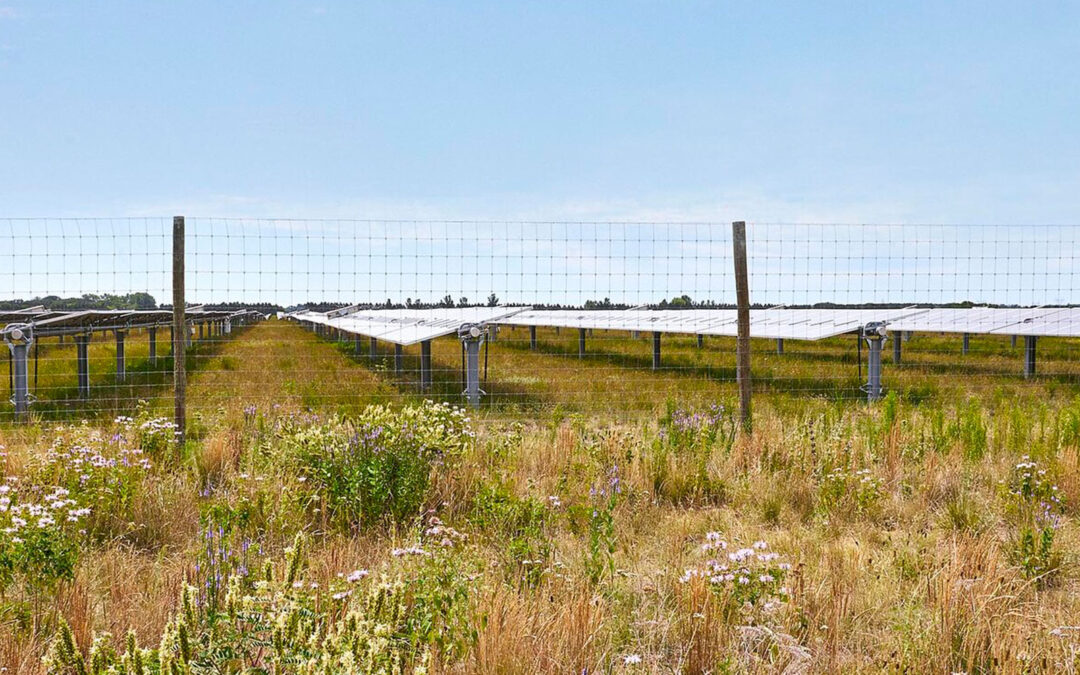
by Heather Allen | Mar 8, 2021 | Health, Local Government, Public Service Commission, Renewables, Solar, Utility Scale
Onion River Solar is a proposed 150-megawatt solar generating facility to be located in southern Sheboygan County that will feature a prairie and pollinator environment. Ranger Power is developing the project and others in the state, including Badger State Solar and Crawfish River Solar, in Jefferson County, and Western Mustang Solar in northwest Wisconsin.
Photos from the North Star Solar project in North Branch, Minnesota, illustrate the type of pollinator and prairie habitat that will accompany Onion River. While grazing is not yet part of the Onion River project, the North Star Solar photos demonstrate the potential to graze livestock between solar panel rows, an exciting opportunity for solar in Wisconsin.
The Onion River Solar project will produce clean, cost-effective electric energy for Alliant Energy customers, provide a diversified income source for local farmers, and generate significant tax revenues for the town and county. This project can improve environmental outcomes ranging from reduced air emissions, reduced chemical use on local farmland, increased grassland and pollinator habitat and improved downstream water quality in parts of the Onion River watershed.
Onion River Solar is anticipated to avoid the generation of over 400 million pounds of CO2 per year. For more information on solar farms’ potential to reduce air emissions, you can see RENEW’s analysis of the 250 MW Darien Solar Farm’s health benefits.
The solar farm is expected to generate $250,000 per year in new revenue to the Town of Holland and $350,000 per year to Sheboygan County. Local governments can use these funds to meet pressing local budget priorities.
Onion River Solar represents a significant step forward to build Wisconsin’s renewable energy capacity and to shift away from fossil fuels.
The Public Service Commission is accepting comments on this project which must be received no later than Tuesday, March 16, 2021.
Additional project information, including a map, are available at www.OnionRiverSolar.com. If you have questions, please contact the project at (888) 898-8878 or info-wisconsin@rangerpower.com.
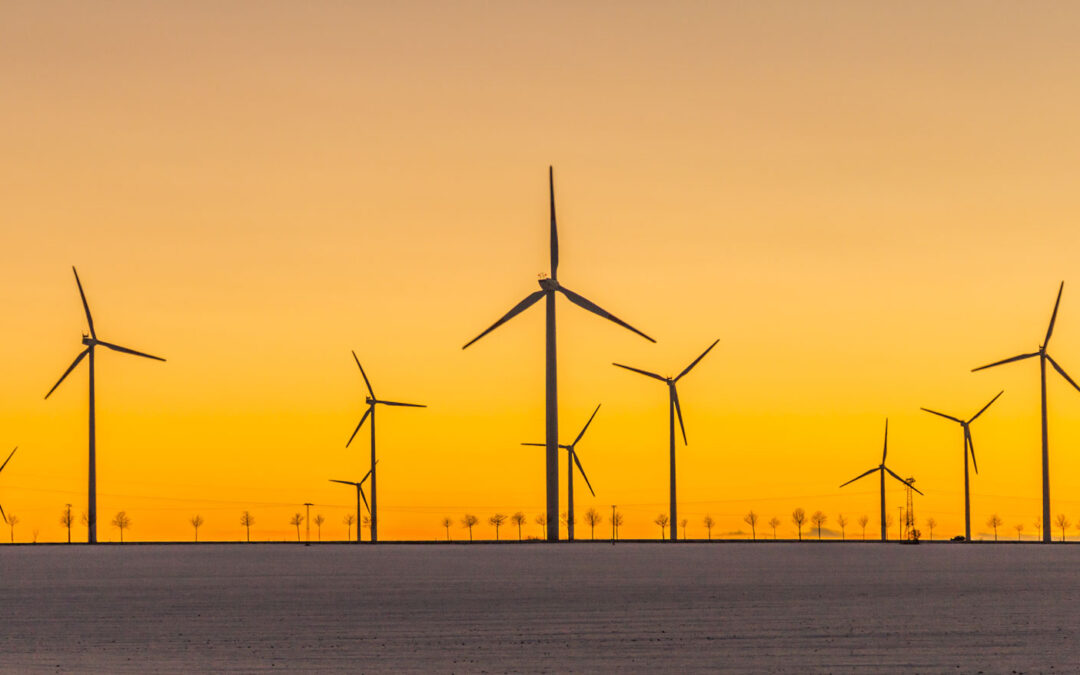
by Sam Dunaiski | Feb 25, 2021 | Renewables, Solar, Utilities, Wind
The unfolding situation in Texas remains dire. The grid operator, the Electric Reliability Council of Texas (ERCOT) first warned of rolling blackouts on Sunday, February 14, 2021. The blackouts and widespread power outages lasted for days in the Lone Star state amidst some of the harshest winter weather in years. Millions of people were left without power and dozens perished.
Now just ten days out from the onset of the crisis, water contamination and shortages (resulting from frozen and broken pipes) continue to threaten the health and welfare of Texas residents.
Immediately preceding the energy crisis, a powerful winter storm blanketed the southern Plains with freezing rain and snow, followed by record low temperatures. Frigid temperatures had a stranglehold on the central U.S. for two straight weeks, extending from Canada to Mexico. Many parts of Texas and the South rely on electricity as their primary source of heat, as opposed to gas, propane, or wood, which are more commonly used in the northern United States. The prolonged cold snap created a high demand for natural gas, for both heating and electricity generation around the region, triggering an upsurge in electricity consumption.
Everything that could go wrong, did go wrong
As demand skyrocketed, supply plummeted. Even before the winter weather moved in ERCOT had nearly 14 gigawatts (GW) of electric-generating capacity offline for maintenance. As other generating sources were shuttered, ERCOT was left with as much as 34 GWs of electric production offline. This periodically amounted to 30-42% of ERCOT’s total electric capacity.
Unfortunately, the outages gave rise to a disinformation campaign that attempted to implicate frozen wind turbines as the principal cause of the power outages. This narrative is patently false. While some wind turbines were frozen and unable to produce electricity, the cold and ice had a far more disruptive effect on thermal plants.
Operators at ERCOT and researchers identified the critical failure of natural gas to generate electricity and heat during the crisis. Nearly 50% of ERCOT’s natural gas generators were offline, either a result of frozen lines or diminished supplies as demand for the fuel soared.
Wind, natural gas, and other energy sources need to be weatherized
In fact, renewable energy generation facilities played a key role in keeping the lights on. According to ERCOT, wind power output exceeded forecasted generation numbers during the blackouts, even with the icing of turbines. At times, solar generation has also exceeded output. Wind turbines would have done better if they had used heating technology as Sweden does, to prevent icing and keep turbines generating power in extreme cold. Using heating carbon-fiber technology similar to aircraft, Swedish maintenance workers add a thin layer of material to the wings of the turbines that can be automatically heated can prevent ice before it forms.
The bottom line is that our electricity grid and all types of power generation are vulnerable to extreme weather events. We need to plan for these events and invest in grid resilience and weatherization to prevent disasters like this from repeating.
There is no single cause for the situation currently unfolding in Texas, and no silver bullet for preventing a repeat situation. A combination of record demand due to the prolonged cold temperatures, and generators not equipped to function in very cold temperatures are responsible for the rolling blackouts now plaguing the state.
Planning and preparing for extreme weather has to be part of the conversation
Renewables are reliable sources of energy from Texas to Antarctica. Even during extreme weather events, wind and solar can function when traditional energy sources have gone offline. More renewable energy sources, in more locations, will diversify our grid and make it less susceptible to the forces of nature and the market. Microgrids and energy storage are important tools to help shore up the reliability and safety of our grid.
Extreme weather events will continue to complicate our lives and strain our power grids over the foreseeable future. By incorporating more sources of renewable energy, we can reduce problems and increase reliability in our electric grid.
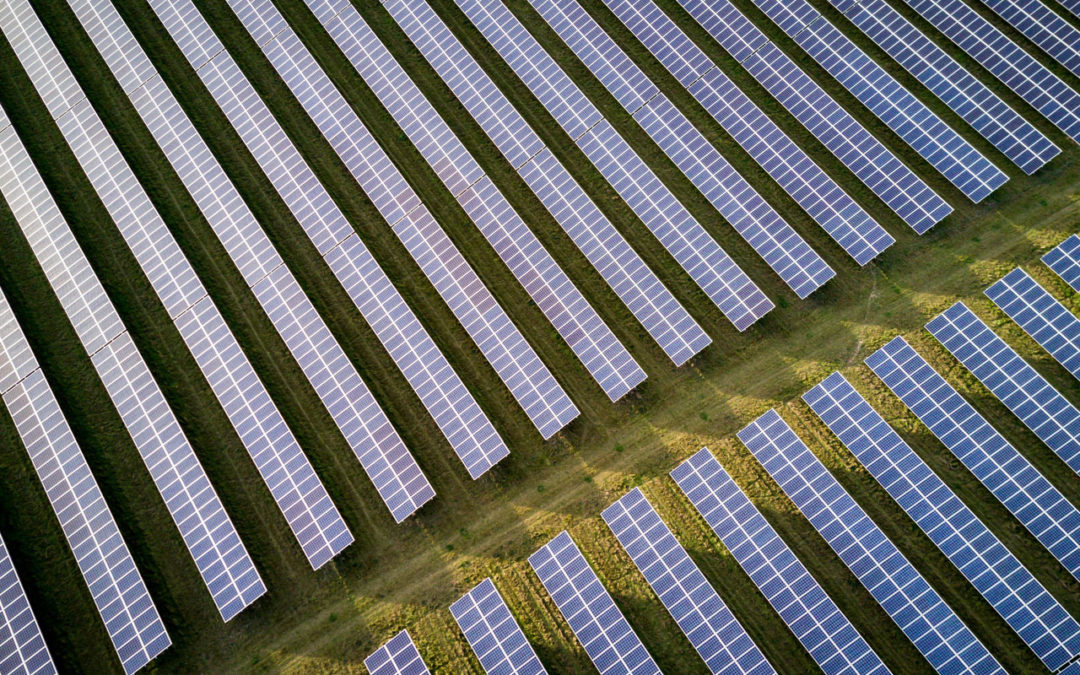
by Lauren Reeg | Feb 17, 2021 | Energy Storage, Renewables, Solar, Utility Scale
3.11.2021 Update: After the initial posting of this blog, further research indicates that the Darien Solar Energy Center would have a *capacity factor likely closer to 0.24, not .30. Using this updated capacity factor of .24 for the Darien Solar Energy Center, emissions would decrease by 423,000 tons of carbon dioxide (CO2), 602,000 pounds of nitrogen oxides (NOx), 745,000 pounds of sulfur dioxide (SO2), and 76,000 pounds of particulate matter (PM10) annually for the lifetime of the project. These emissions reductions would lead to decreased mortality of about one life per year, annual health savings between $15 to $34 million, and yearly climate savings of over $17 million
* Capacity factor expresses in percentage form the expected production of a power plant relative to its maximum possible output. This ratio takes into account variables such as maintenance-related downtime and the availability of the energy source fueling the plant. All power plants have a capacity factor of less than one.
Consider a solar farm sized to produce a theoretical maximum of 10,000 megawatt-hours/year. If the plant is estimated to have a capacity factor of 0.30, it can be expected to produce 3,000 megawatt-hours a year. A solar farm could not have a 1.0 capacity factor because the sun doesn’t shine all day. In fact, with nighttime constituting half of the hours in a year, a solar farm could not have a capacity factor greater than 0.50.
The Darien Solar Energy Center is a proposed 250-MW solar PV facility in Walworth county, Wisconsin currently under review at the Wisconsin Public Service Commission. If approved, developers hope to have the project constructed and energized by 2023, offering significant health, environmental, and economic benefits to local Wisconsin communities.
Using the EPA’s Avoided Emission and Generation tool, RENEW Wisconsin estimates that the Darien Solar Energy Center could reduce emissions by 538 thousand tons of carbon dioxide (CO2), 700 thousand pounds of nitrogen oxides (NOx), 1 million pounds of sulfur dioxide (SO2), and 98 thousand pounds of particulate matter (PM10) annually for the lifetime of the project. Carbon dioxide is a greenhouse gas that contributes to climate change, and sulfur dioxide, nitrogen oxides, and particulate matter contribute to health problems including asthma, cardiopulmonary disease, and premature mortality. Fossil fuel power plants are the primary emission sources of these pollutants. Transitioning to the clean energy produced by the Darien solar project, Wisconsin would reduce its fossil fuel generation, providing significant human health and environmental benefits to its residents.
RENEW Wisconsin completed in-house research on the health benefits of the Darien project. Using the EPA’s Co-Benefit Risk Assessment model, the Darien Solar Energy Center is estimated to reduce mortality by up to one life per year for 30 years in Wisconsin. The health impacts are substantial for Wisconsin, a state highly dependent on coal-fired electricity generation. Energizing the Darien Solar Energy Center could directly save Wisconsin lives.
In addition to the health benefits of clean energy, there are also significant economic benefits this solar project could deliver. Using the EPA’s health benefit factors for Wisconsin, the annual savings ranged from $18 to $42 million depending on population, pollution burden, and other differentiating factors. Moreover, Darien could produce up to $22 million in annual savings resulting from avoided climate impacts. Climate impacts are estimated from the EPA’s social cost of carbon values. These monetized health impacts are significant and illustrate the benefits that the Darien Solar Energy Center could bring to the Wisconsin economy.
Overall, these findings detail the benefits that the Darien Solar Energy Center offers Wisconsin by reducing pollution, decreasing human mortality, helping to mitigate climate damages, and providing millions of dollars in economic benefits to the state. Other significant benefits related to Wisconsin GDP, employment, and environmental and water impacts were not discussed in this article. To learn more about the Darien Solar Energy Center and its additional benefits, please visit the Town of Darien website.






